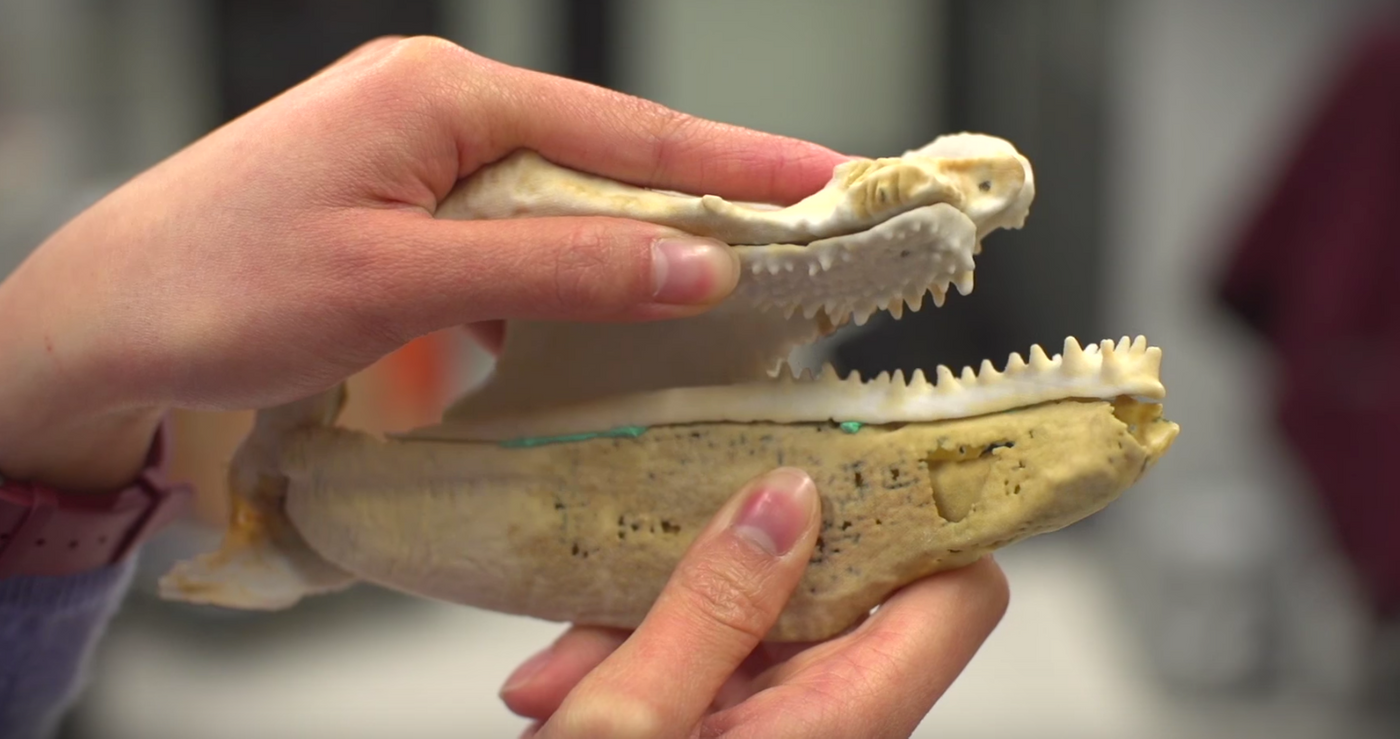With a 400-Million Year Old Fossil and 3D Printing, Scientists Study Teeth Origins
The origin of teeth in the evolutionary mystery of the world’s animal timeline is very much a mystery. We know animals haven’t had teeth since the dawn of time, but what we don’t know exactly when teeth started to first appear in animals on Earth.
Although many scientists were convinced that teeth may have existed in Earthly creatures as early as 400 million years ago, a new study that appears in Biology Letters is really starting to shake things up about our knowledge into the origins of jaws and teeth in animals.

Image Credit: Australian National University (ANU)/YouTube
To learn more, scientists from Australian National University have taken the fossil of a 400 million-year-old armored fish from the extinct placoderm family known as Buchanosteus.
This fish is particularly important because it’s one of the first known to have developed a jaw, which is typically required for the formation of teeth, and it has teeth-like appendages inside of its mouth.
They used micro-CT scanning to create accurate 3D-printed three-dimensional structures of the skull and jaws of the fish to study it in more detail, as they can’t really do much testing on the delicate fossil itself without running the risk of destroying it.
"We are conducting further research on the internal tissue structure of tooth-like denticles in the mouth of the fish fossil, to determine whether they represent a transitional stage in the evolution of teeth," study co-author Gavin Young said.
The scientists have found that the denticles inside the mouth resemble teeth, but there’s some debate as to whether or not the species actually had what we would consider modern day teeth. Instead, they’re just hard bumps that may have been used to help with grinding.
One thing the team agrees on is their research debunks an earlier study from 2015 that suggested placoderms actually had teeth. Nevertheless, these formations inside the placoderms’ mouths may have helped lay out the groundworks for what we consider teeth in the modern world.
Despite what the scientists explain in the study, there is still quite a bit of confusion as to exactly when teeth started showing up in animals on Earth. We still don’t really understand at what point in evolution this began to be a thing or what species it began with.
Nevertheless, as technology in the field advances, and the knowledge base grows, scientists may soon find the answers to all of the questions they're looking for.
Source: Australian National University via R&DMag








